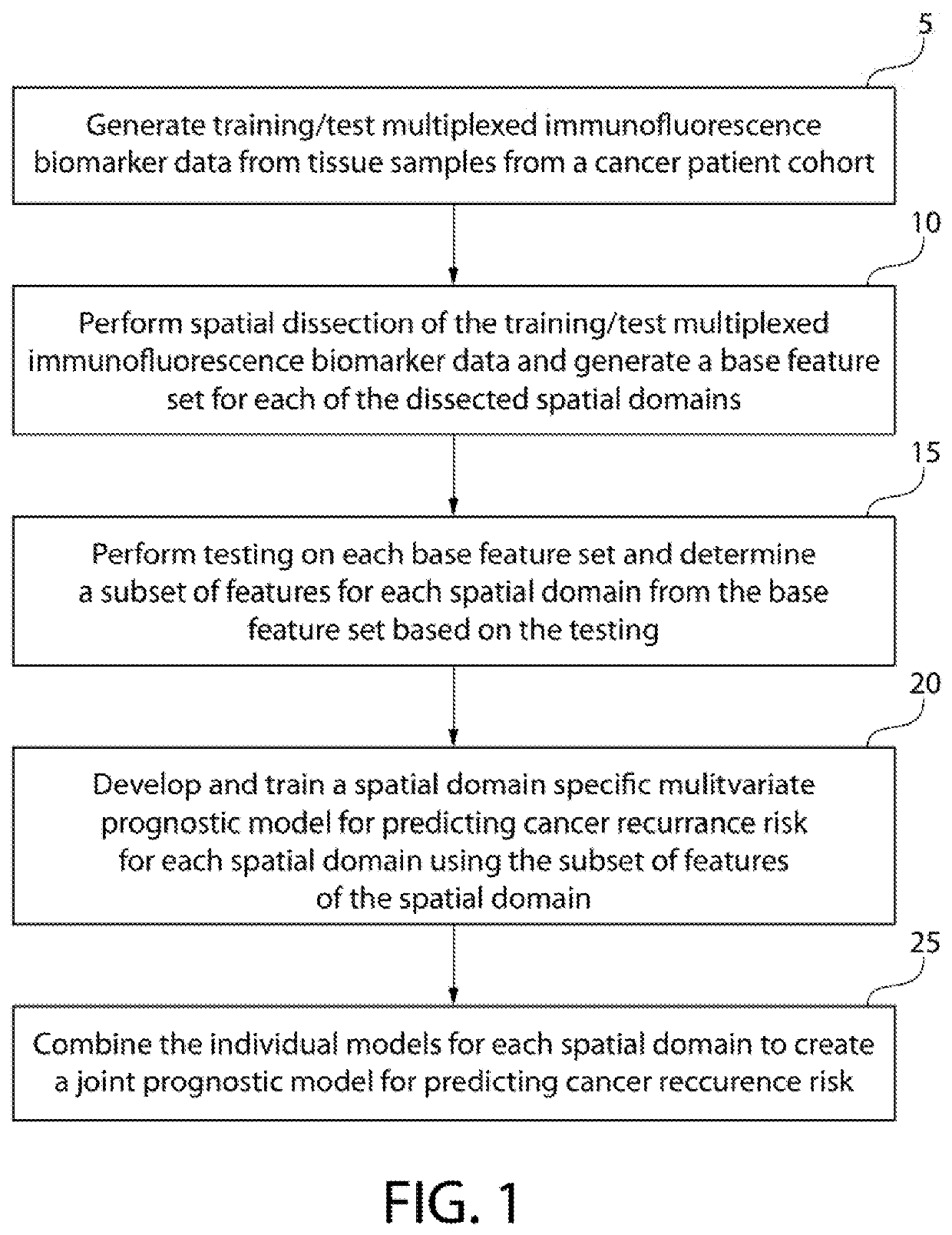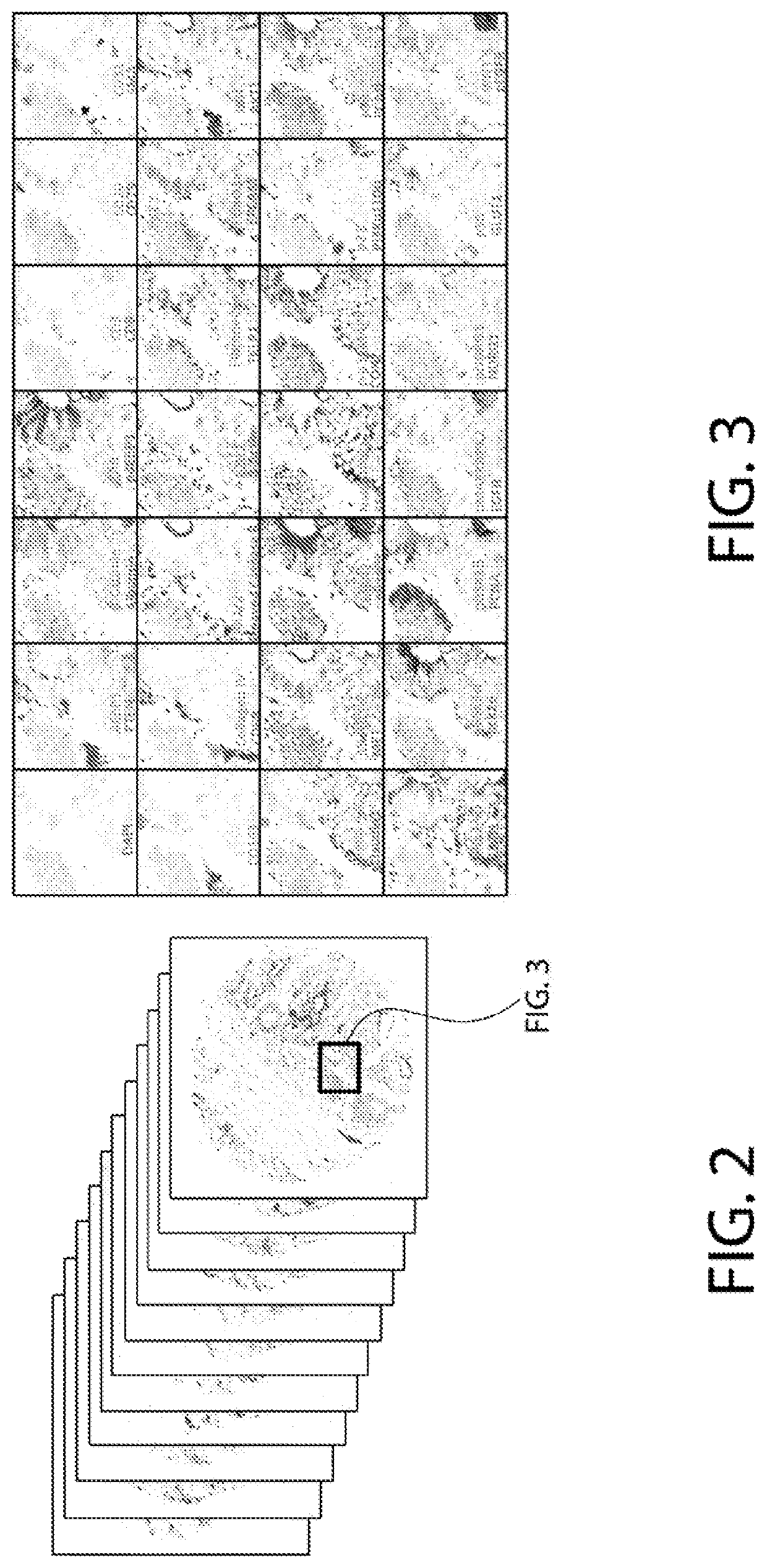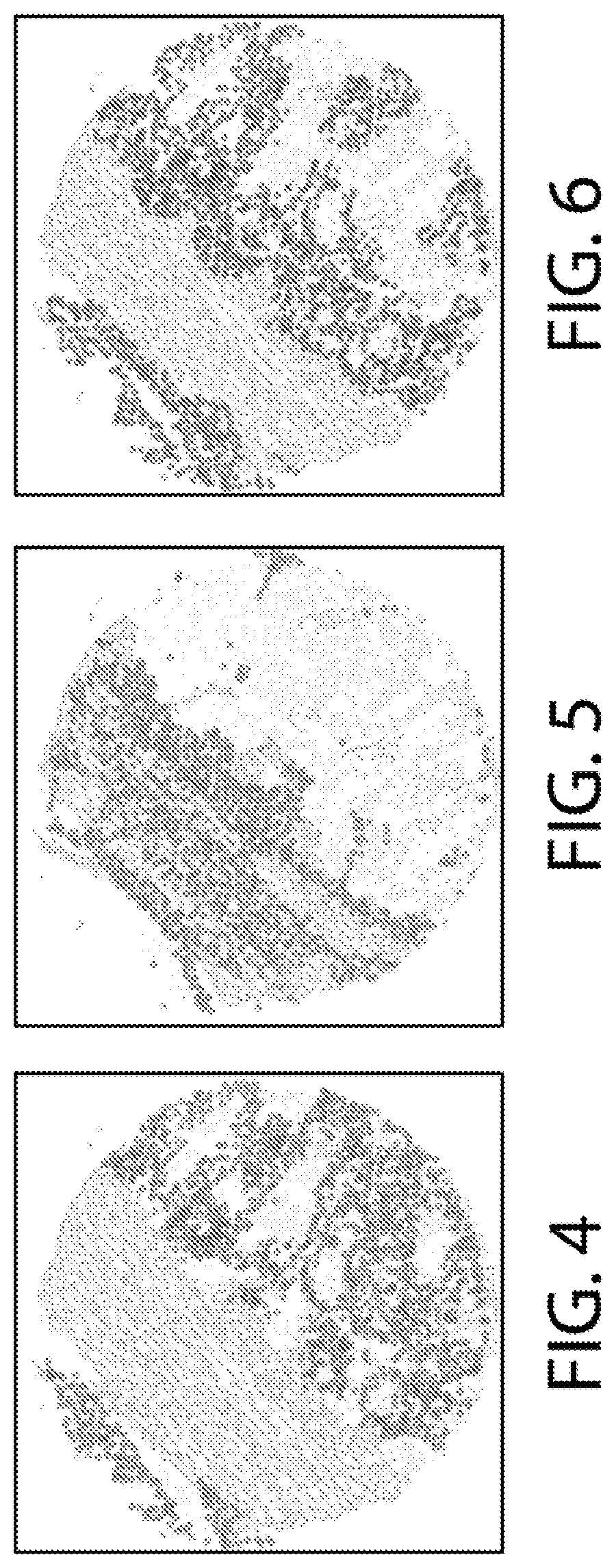Predicting cancer recurrence from spatial multi-parameter cellular and subcellular imaging data
a multi-parameter, cellular and subcellular imaging technology, applied in the field of digital pathology, can solve problems such as significant variability in patient outcomes
- Summary
- Abstract
- Description
- Claims
- Application Information
AI Technical Summary
Benefits of technology
Problems solved by technology
Method used
Image
Examples
Embodiment Construction
[0028]As used herein, the singular form of “a”, “an”, and “the” include plural references unless the context clearly dictates otherwise.
[0029]As used herein, the term “number” shall mean one or an integer greater than one (i.e., a plurality).
[0030]As used herein, the terms “component” and“system” are intended to refer to a computer related entity, either hardware, a combination of hardware and software, software, or software in execution. For example, a component can be, but is not limited to being, a process running on a processor, a processor, an object, an executable, a thread of execution, a program, and / or a computer. By way of illustration, both an application running on a server and the server can be a component. One or more components can reside within a process and / or thread of execution, and a component can be localized on one computer and / or distributed between two or more computers. While certain ways of displaying information to users are shown and described with respec...
PUM
 Login to View More
Login to View More Abstract
Description
Claims
Application Information
 Login to View More
Login to View More - R&D
- Intellectual Property
- Life Sciences
- Materials
- Tech Scout
- Unparalleled Data Quality
- Higher Quality Content
- 60% Fewer Hallucinations
Browse by: Latest US Patents, China's latest patents, Technical Efficacy Thesaurus, Application Domain, Technology Topic, Popular Technical Reports.
© 2025 PatSnap. All rights reserved.Legal|Privacy policy|Modern Slavery Act Transparency Statement|Sitemap|About US| Contact US: help@patsnap.com



